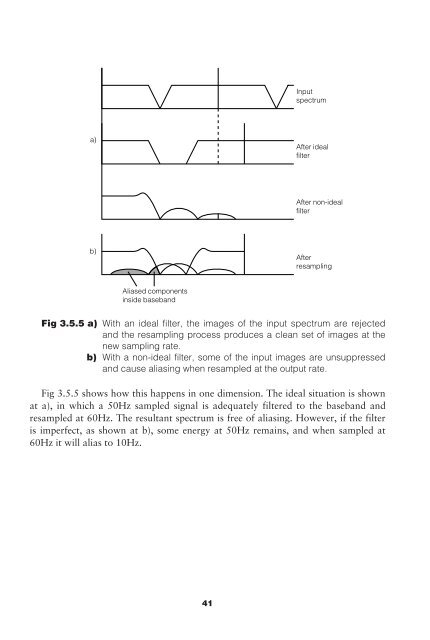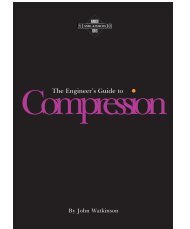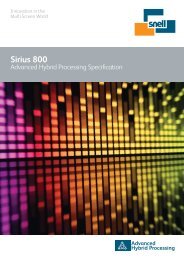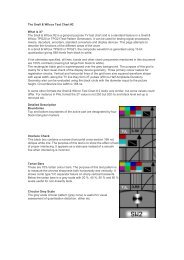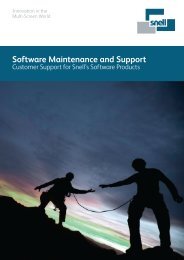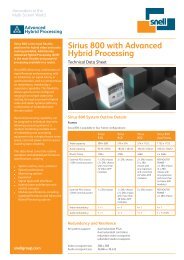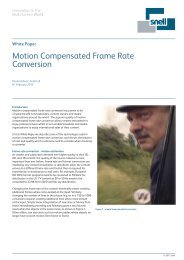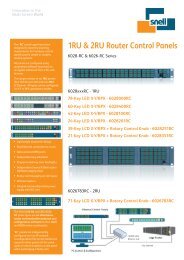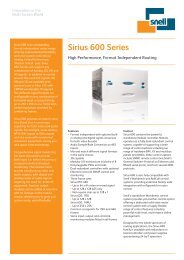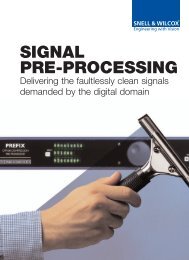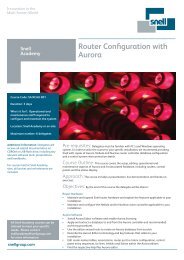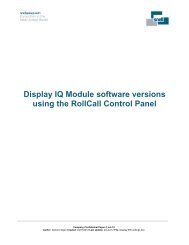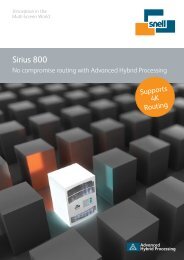The Engineer's Guide to Standards Conversion - Snell
The Engineer's Guide to Standards Conversion - Snell
The Engineer's Guide to Standards Conversion - Snell
Create successful ePaper yourself
Turn your PDF publications into a flip-book with our unique Google optimized e-Paper software.
Input<br />
spectrum<br />
a)<br />
After ideal<br />
filter<br />
After non-ideal<br />
filter<br />
b)<br />
After<br />
resampling<br />
Aliased components<br />
inside baseband<br />
Fig 3.5.5 a) With an ideal filter, the images of the input spectrum are rejected<br />
and the resampling process produces a clean set of images at the<br />
new sampling rate.<br />
b) With a non-ideal filter, some of the input images are unsuppressed<br />
and cause aliasing when resampled at the output rate.<br />
Fig 3.5.5 shows how this happens in one dimension. <strong>The</strong> ideal situation is shown<br />
at a), in which a 50Hz sampled signal is adequately filtered <strong>to</strong> the baseband and<br />
resampled at 60Hz. <strong>The</strong> resultant spectrum is free of aliasing. However, if the filter<br />
is imperfect, as shown at b), some energy at 50Hz remains, and when sampled at<br />
60Hz it will alias <strong>to</strong> 10Hz.<br />
41


